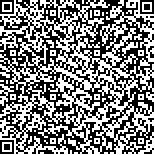| 摘要: |
| [摘要] 目的 对比分析肿块强化与非肿块强化乳腺癌患者的临床和病理特征。方法 回顾性收集解放军总医院第一医学中心2019年1月至2019年12月收治的浸润性乳腺癌患者76例。根据乳腺动态增强MRI检查结果,将其分为肿块强化组(57例)和非肿块强化组(19例)。比较两组患者临床特征和病理特征。结果 与肿块强化组比较,非肿块强化组病灶表观扩散系数(ADC)值增高[(0.95±0.19) vs (0.85±0.17),P=0.034],病变边界清晰率下降(15.79% vs 63.16%,P=0.000),人表皮生长因子受体-2(HER-2)阴性表达率显著降低(0.00% vs 26.32%,P=0.013)。两组患者MRI早期强化率、增强平台、病灶大小、雌激素受体(ER)、孕激素受体(PR)、细胞增殖抗原(Ki-67)、腋窝淋巴结转移率、腋窝淋巴结转移数、锁骨上淋巴结转移率、侵及皮肤或胸壁率、病理类型、淋巴细胞浸润率比较差异无统计学意义(P>0.05)。结论 非肿块强化的浸润性乳腺癌患者HER-2阴性表达率更低,且病灶ADC值更高,肿块边界不清晰概率更大,可能与患者预后不良有关。 |
| 关键词: 浸润性乳腺癌 乳腺动态增强核磁共振 病理特征 人表皮生长因子受体-2 |
| DOI:10.3969/j.issn.1674-3806.2022.11.01 |
| 分类号:R 737.9 |
| 基金项目: |
|
| Analysis on the clinical and pathological features between the patients with mass enhanced breast cancer and those with non-mass enhanced breast cancer |
|
WU Xiang-dong, TIAN Lin, HAO Xiao-peng
|
|
Department of General Surgery, Datong Rehabilitation Hospital, Shanxi 037000, China
|
| Abstract: |
| [Abstract] Objective To analyse the clinical and pathological features between the patients with mass enhanced breast cancer and those with non-mass enhanced breast cancer. Methods Seventy-six patients with invasive breast cancer admitted to the First Medical Center of the Chinese People′s Liberation Army(PLA) General Hospital from January 2019 to December 2019 were retrospectively collected. According to the results of breast dynamic contrast-enhanced magnetic resonance imaging(MRI), the patients were divided into mass enhancement group(57 cases) and non-mass enhancement group(19 cases). The clinical and pathological features were compared between the two groups. Results Compared with those in the mass enhancement group, the apparent diffusion coefficient(ADC) value of the lesions in the non-mass enhancement group was increased [(0.95±0.19) vs (0.85±0.17), P=0.034], and the clear rate of lesion boundary in the non-mass enhancement group was decreased(15.79% vs 63.16%, P=0.000). The expression rate of human epidermal growth factor receptor-2(HER-2) negative in the non-mass enhancement group was significantly lower than that in the mass enhancement group(0.00% vs 26.32%, P=0.013). There were no significant differences in MRI early enhancement rate, enhancement platform, lesion size, estrogen receptor(ER), progesterone receptor(PR), proliferating cell nuclear antigen(Ki-67), metastasis rate, number of metastatic axillary lymph nodes supraclavicular lymph node metastasis rate, invasion rate of skin or chest wall, pathological type and lymphocyte infiltration rate between the patients in the two groups(P>0.05). Conclusion The expression rate of HER-2 negative in the invasive breast cancer patients with non-mass enhancement is lower, and the ADC value of the lesions is higher, and the probability of unclear tumor boundary is higher, which may be related to the poor prognosis of the patients. |
Key words: Invasive breast cancer Breast dynamic contrast-enhanced magnetic resonance imaging(MRI) Pathological feature Human epidermal growth factor-2(HER-2)
*共同第一作者 |

